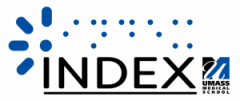- Accessibility Cheat Sheets
This collection of cheat sheets includes those for Web Content Accessibility Guidelines, WAI-ARIA, and Mobile devices.
- How to Meet WCAG 2.0
"A customizable quick reference to Web Content Accessibility Guidelines (WCAG) 2.0 requirements (success criteria) and techniques."
- W3C's Website Accessibility Conformance Evaluation Methodology (WCAG-EM) 1.0
"This document provides guidance on evaluating how well websites conform to the Web Content Accessibility Guidelines (WCAG) 2.0."
- WCAG 2.0 Techniques for PDF
"As with the Flash techniques for WCAG 2.0 and techniques for all other technologies, the PDF techniques are presented as examples which the WCAG Working Group viewed as sufficient to meet WCAG 2.0 success criteria, not as the only way to meet any given success criteria. Authors may discover a new way to address a success criteria, in a way not yet covered in the existing techniques, and be able to demonstrate why it is sufficient. The techniques offer a collection of strategies that have […]
- eGovernment Resource Centre: Creating sites accessible to people with cognitive disabilities - Accessibility Toolkit - Version 3 - 2009
Lists the checkpoints of the W3C Web Content Accessibility Guidelines (Version 1 & 2) that are relevant to people with cognitive disabilities. Also describes how to make Web site design and content accessible.
- Resources about WCAG 2.0 and Cognitive Disabilities
Provided by Paul Bohman.
- Formal Objection to WCAG 2.0 from Lisa Seeman on 2006-06-20
"WCAG 2.0 claims to define and address the requirements for making Web content accessible to those with learning difficulties, cognitive limitations and others. We object to that claim."
- Letter of invitation re cognitive language and learning aspects of WCAG 2.0
"The following is the text of an E-mail dated 2006.11.22 from WCAG Working Group cochair Gregg Vanderheiden to various parties interested in cognitive disability under WCAG 2." This is the response by the W3C/WAI to the formal objection.
- Going Beyond WCAG 2.0
"Application Note: 'Designing Web Content To Be More Accessible By Individuals With Language, Learning, And Cognitive Disabilities'" ... "Research Topic Paper: 'On The Horizon: Emerging and Future Techniques for Making Web Content More Accessible To Individuals with Language, Learning, and Cognitive Disabilities'”
- Direct Access vs. Access via Special User Agent
"Direct access means content is intrinsically accessible, so all users, including users with disabilities, can benefit from the accessibility features provided." ... "Access via special user agents, by contrast, involves features that are not seen or used by most users, but can be exploited by assistive technologies."
- Cognitive and Learning Disability Matrix (for WCAG 2.0) - Joe Clark: Media access
"This table lists cognitive and learning disabilities and suggests the success criteria from WCAG 2 that improve the accessibility of content for users with each disability. In many cases, the success criterion does not assist the user directly, but enables assistive technology that can assist the user."
- World Wide Web Consortium (W3C)
"... an international community where Member organizations, a full-time staff, and the public work together to develop Web standards. Led by Web inventor Tim Berners-Lee, W3C's mission is to lead the Web to its full potential." The WC3's newest guidelines (WCAG 2.0) address cognitive Web accessibility.
- Juicy Studio: Formal Objection to WCAG Claiming to Address Cognitive Limitations
"Summary: Lisa Seeman's objection to WCAG's claim that WCAG 2.0 will address requirements for people with learning disabilities and cognitive limitations." Has many comments.
- W3C Web Content Accessibility Guidelines (WCAG) 1.0 Related to Cognitive Disabilities
Google search results for the word "cognitive" on the WCAG 1.0 Web site.
- W3C Web Content Accessibility Guidelines (WCAG) 2.0 Related to Cognitive Disabilities
Google search results for the word "cognitive" on the WCAG 2.0 Web site.
- Web accessibility for people with cognitive disabilities, extended abstracts on human factors in computing systems
"This pilot study investigated individuals with developmental cognitive disabilities (DCD) navigating W3C accessibility-compliant Web sites and the impact of four cognitive determinants: situation awareness, spatial awareness, task-set switching, and anticipated system response. Participants were placed into one of two search conditions and were asked to complete information-finding tasks. The usability evaluation demonstrated that the majority of users with DCD were able to access the Web […]
- WCAG 2 activity on cognitive disability (Joe Clark: Media access)
A historical perspective (from 2006) on WCAG 2 development related to people with cognitive disabilities.
– Web Content Accessibility Guidelines
